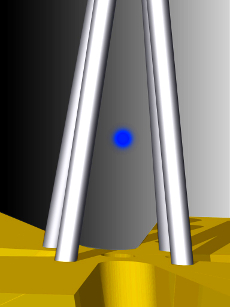Single atom nano-engine build gets underway
 German physicists are moving from calculation to construction on a project that hopes to build an engine powered by a single particle.
German physicists are moving from calculation to construction on a project that hopes to build an engine powered by a single particle.
A team from the Johannes Gutenberg University Mainz (JGU) and the University of Erlangen-Nuremberg is investigating the possibility of a heat engine consisting largely of a single calcium 40 ion.
The proposed nano-engine may be the most efficient in existence, if the calculations underlying the project turn out to be correct.
Way back in 1824, Frenchman Nicolas Carnot calculated the maximum possible efficiency limit of heat-based engines, now known as the Carnot limit. In the case of the newly proposed nano-heat engine, scientists have been theoretically able to exceed the classic Carnot limit by manipulating the heat baths and exploiting non-equlibrium states.
“Individual ions can basically act as the piston and drive shaft or, in other words, represent the entire engine,” says Johannes Roßnagel of the Quantum, Atomic, and Neutron Physics working group.
Single ions have already been captured in specialised traps and, with the help of laser beams and electrical fields, not only cooled and heated but also compressed.
“This means we are able to manipulate the pulse location distribution for optimum efficiency,” added Roßnagel.
“Exceeding the Carnot limit for a standard heat engine thus does not violate the second law of thermodynamics but instead demonstrates that the use of specially prepared, non-thermal heat reservoirs also makes it possible to further improve efficiency.”
As the mechanical capacity of a single ion machine is extremely low, it can probably only be used in heating or cooling nano-systems. However, in a far-off future it may be possible to cluster a multitude of these minuscule motors together to create a highly efficient and omnidirectional form of transport.
The pilot prototype of a single-ion heat engine is under construction at the Mainz campus.







 Print
Print